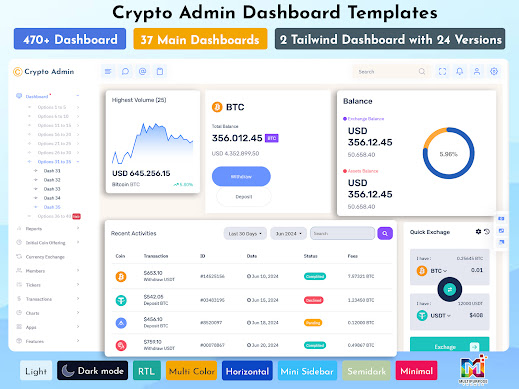The Crypto Trading Dashboard is a versatile and responsive admin template built with Bootstrap 5. You can use it for managing cryptocurrency admin pages or to create a Crypto UI Kit Dashboard for online currencies and portfolio management. Its customizable and flexible design layouts and widgets make it easy to set up.
With over 1,000 elements and components, the possibilities with this dashboard are endless. It is user-friendly, allowing admins to create the modern and functional websites they want without the hassle of designing everything from scratch.
Additionally, the Crypto Dashboard Template helps you track company performance by showing current events alongside past data. This is important because it gives you a clear picture of how your business is doing.
What is a Crypto Admin Template?
A Crypto Amin Template is a pre-designed dashboard that helps users manage their cryptocurrency operations. It usually comes with a set of tools and features that make it easy to track investments, monitor market trends, and manage user accounts. These templates are often used by developers and businesses that want to create their own cryptocurrency management systems without starting from scratch.
Conclusion
A Crypto Trading Dashboard is a valuable tool for anyone involved in cryptocurrency, whether you are a developer, a business owner, or an investor. With features like user management, transaction tracking, and a user-friendly interface, these templates make it easier to manage digital assets. They save time, reduce costs, and provide essential tools for success in the crypto world. If you are looking to streamline your cryptocurrency activities, consider using a crypto admin template today!


